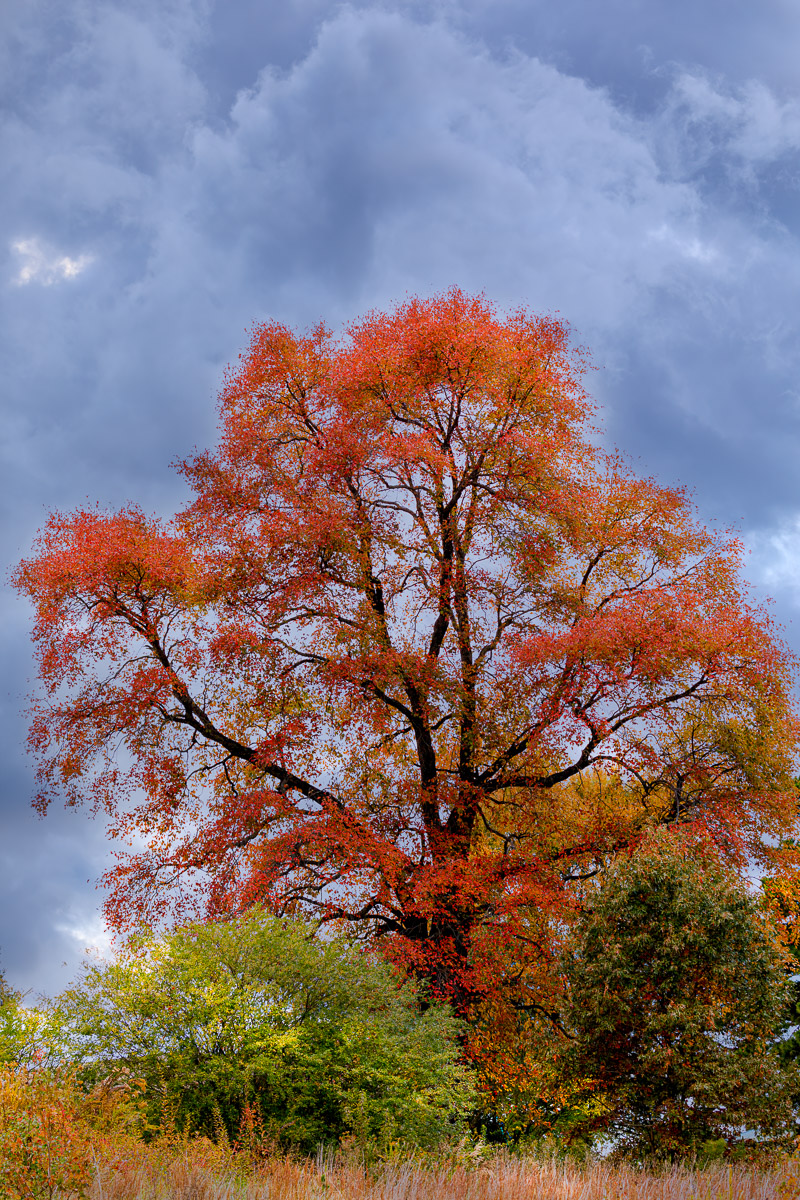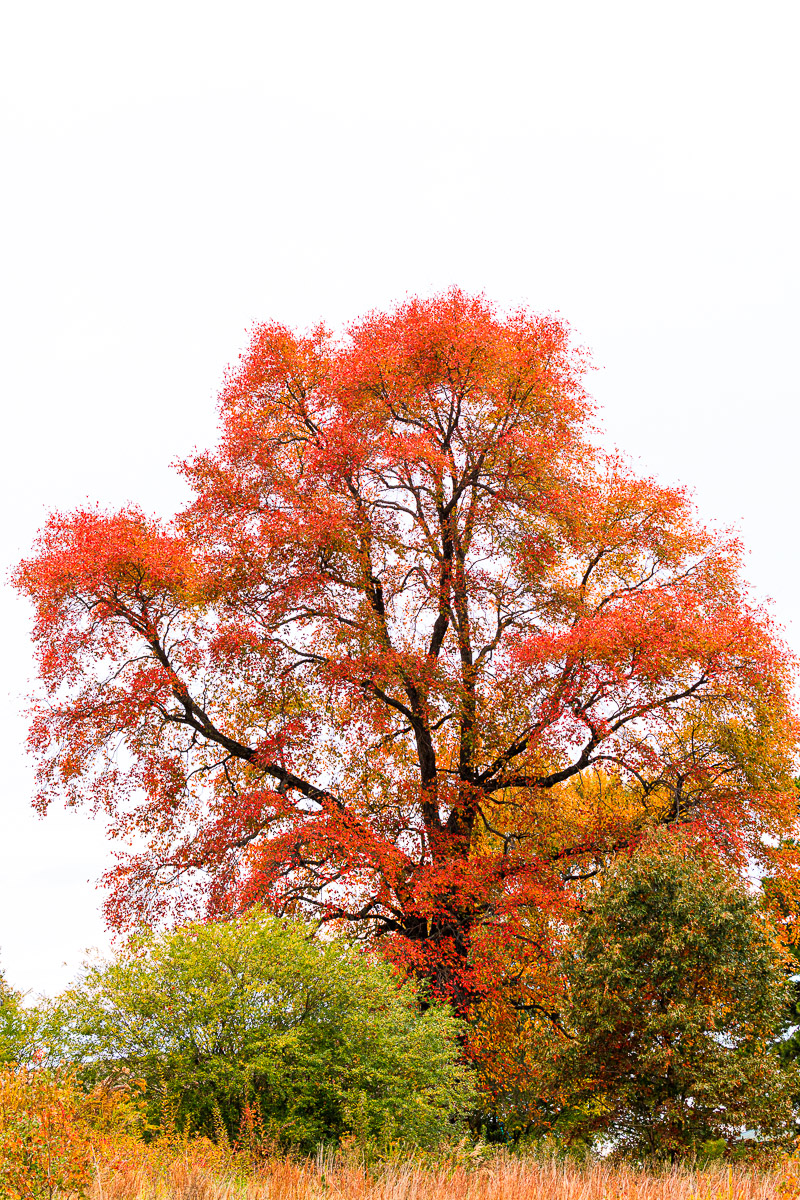
Many photographers believe that the best time to photograph Autumn colors is on a bright, sunny day. But, that is, in many circumstances, the worst time to photograph those colorful leaves. The bright direct light will often wash out and desaturate the very thing that caused you to stop and pull out your camera.
Obviously, there are exceptions, but, often, the best conditions for photographing Autumn leaves are when the sky is overcast. Overcast skies provide soft, even lighting that allows the colors to stand out.
But, photographing in overcast conditions presents its own challenge. Unless the clouds have contrast and texture, any portion of the sky included within the frame will most likely be rendered as a bright textureless background. That in itself can be distracting and detract from the overall image.
When I first noticed this tree, the conditions were perfect for photographing it. The clouds were dark and stormy and had a lot of different textures in them that made for a fantastic background. But, the timing could not have been any worse as I was on my way to finish an errand, and I didn’t have my camera with me. All I could do at that particular moment was hope those perfect conditions would last until I returned home about 30 minutes later.
Alas, they didn’t. By the time I got home, grabbed my equipment, and returned to the tree, the background clouds that had originally caught my attention had been replaced by white, textureless clouds. Those were exactly the kind of clouds I didn’t want, but that’s what I had to work with.
Photographing the tree was pretty straightforward although I did have to account for the wind. Given my distance from the tree, I knew I could use a fairly wide aperture and still get complete depth of field. I estimated that a relatively fast shutter speed of 1/250 of a second would be sufficient to eliminate movement in the leaves. That shutter speed, along with an aperture of 7.1, required me to raise the ISO to 400, which wasn’t enough to produce much unwanted digital noise.
Processing the image was also pretty straightforward. I tweaked the overall brightness of the picture and tweaked the colors and saturation of the leaves to really bring out their color.
But, the sky was, as I expected, problematic. It was a plain white background that was very distracting. It definitely did not capture what I had initially seen a half hour earlier, and it was something that needed to be corrected. Fortunately, I keep a folder full of sky photos I’ve taken over the years for just this purpose.
Opening the file in Photoshop, I tried replacing the sky with the new sky replacement feature. While it did a good job of selecting the large expanse of sky at the top of the frame, it didn’t select the parts of the sky visible between the branches and leaves. After making some adjustments to the selection, I inserted the new sky, but it just didn’t look very realistic, especially between the leaves.
The sky really needed to be replaced, so I tried a second technique. I copied the entire sky picture and placed it over the picture of the tree. I selected the “Multiply” blend mode to combine the two images. Next, I added a mask and, using Photoshop’s gradient tool, removed the portion of the sky photo that overlapped the bottom of the image. I then used the brush tool to remove the portion of the sky that was blended over the leaves. Finally, I made some slight adjustments to the position of the sky. Once that was done, I combined everything into the final, single-layer image.
You can see the difference replacing the sky made in the final image compared to the photograph with the original sky.

